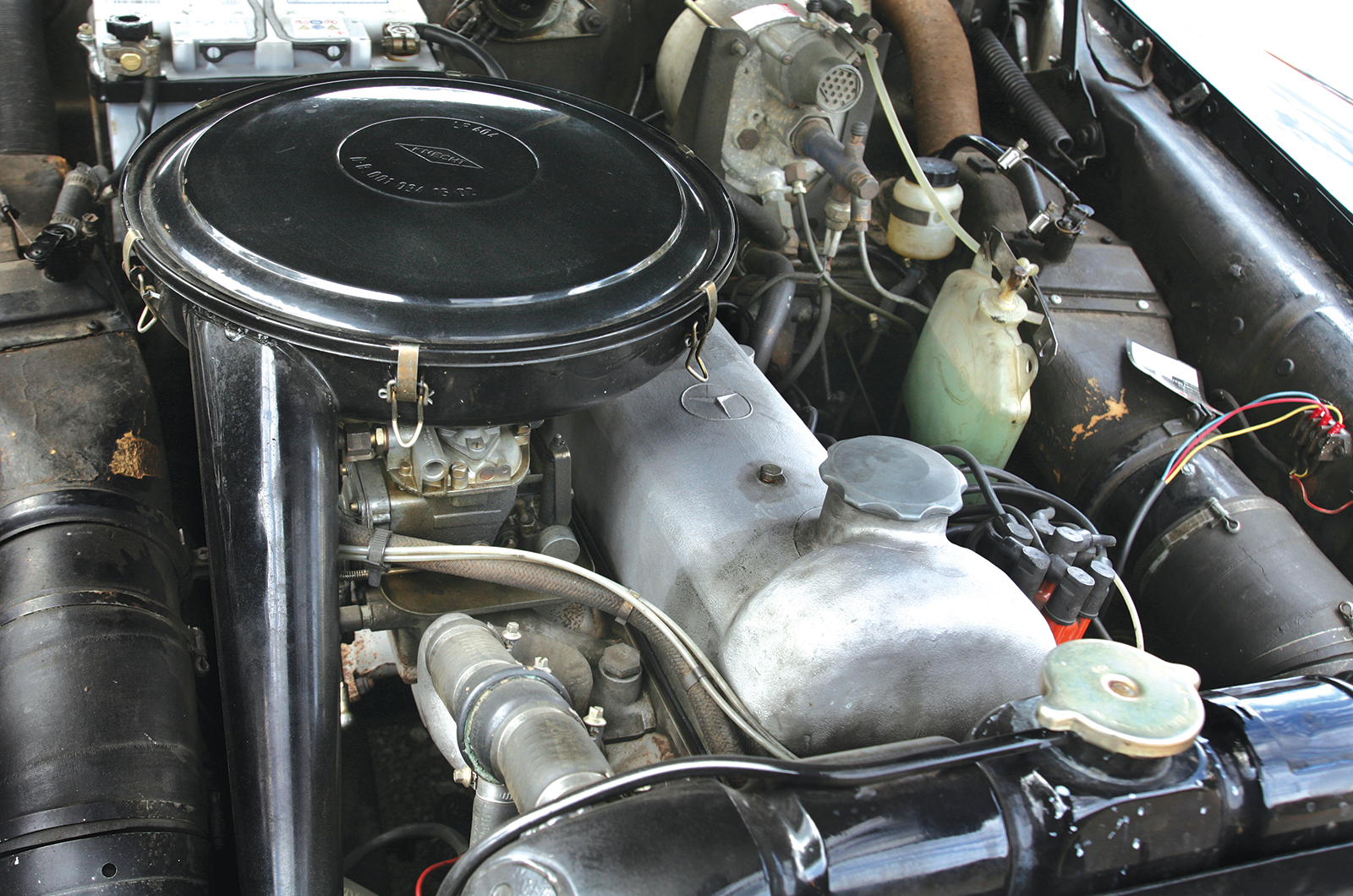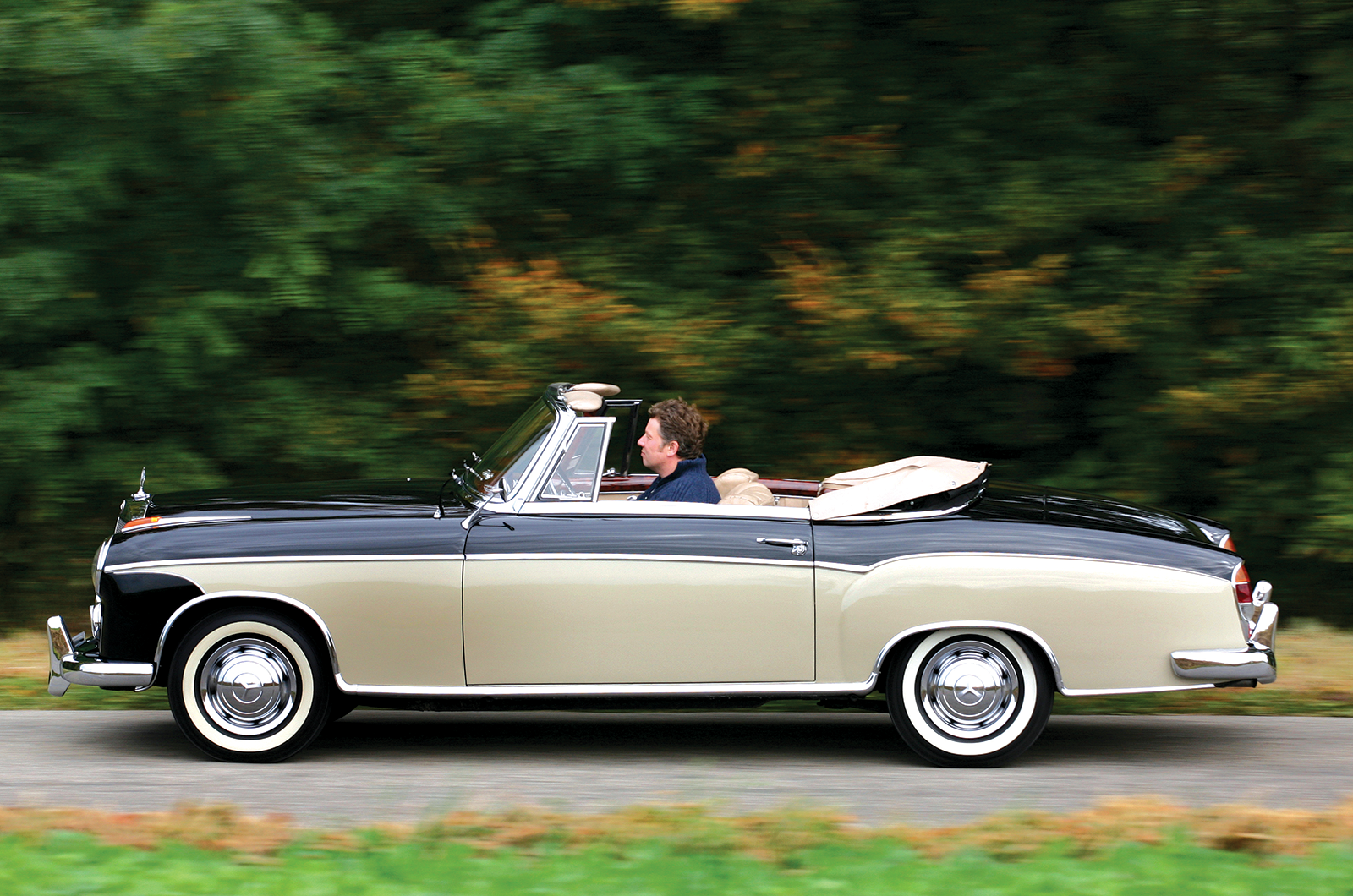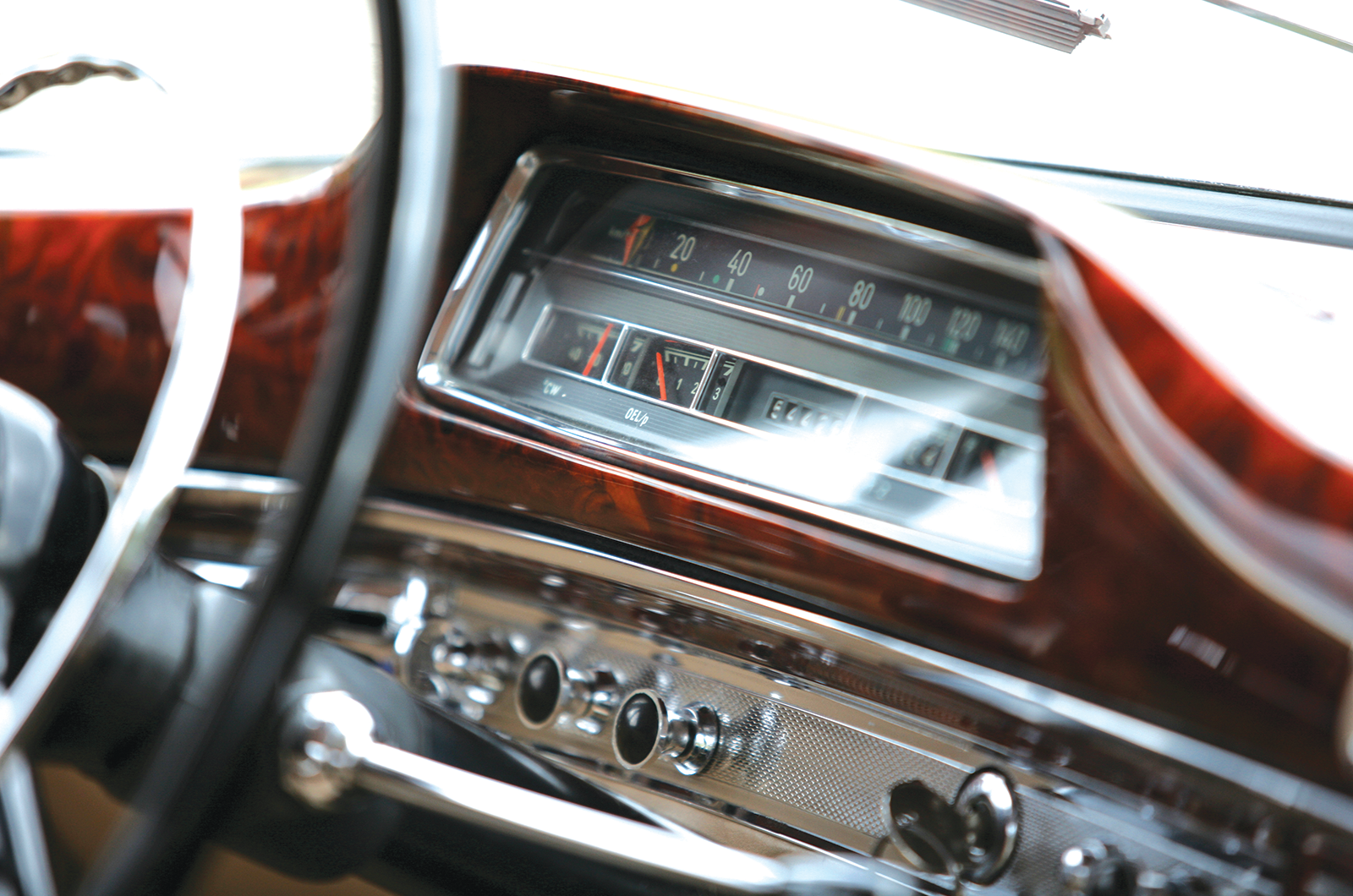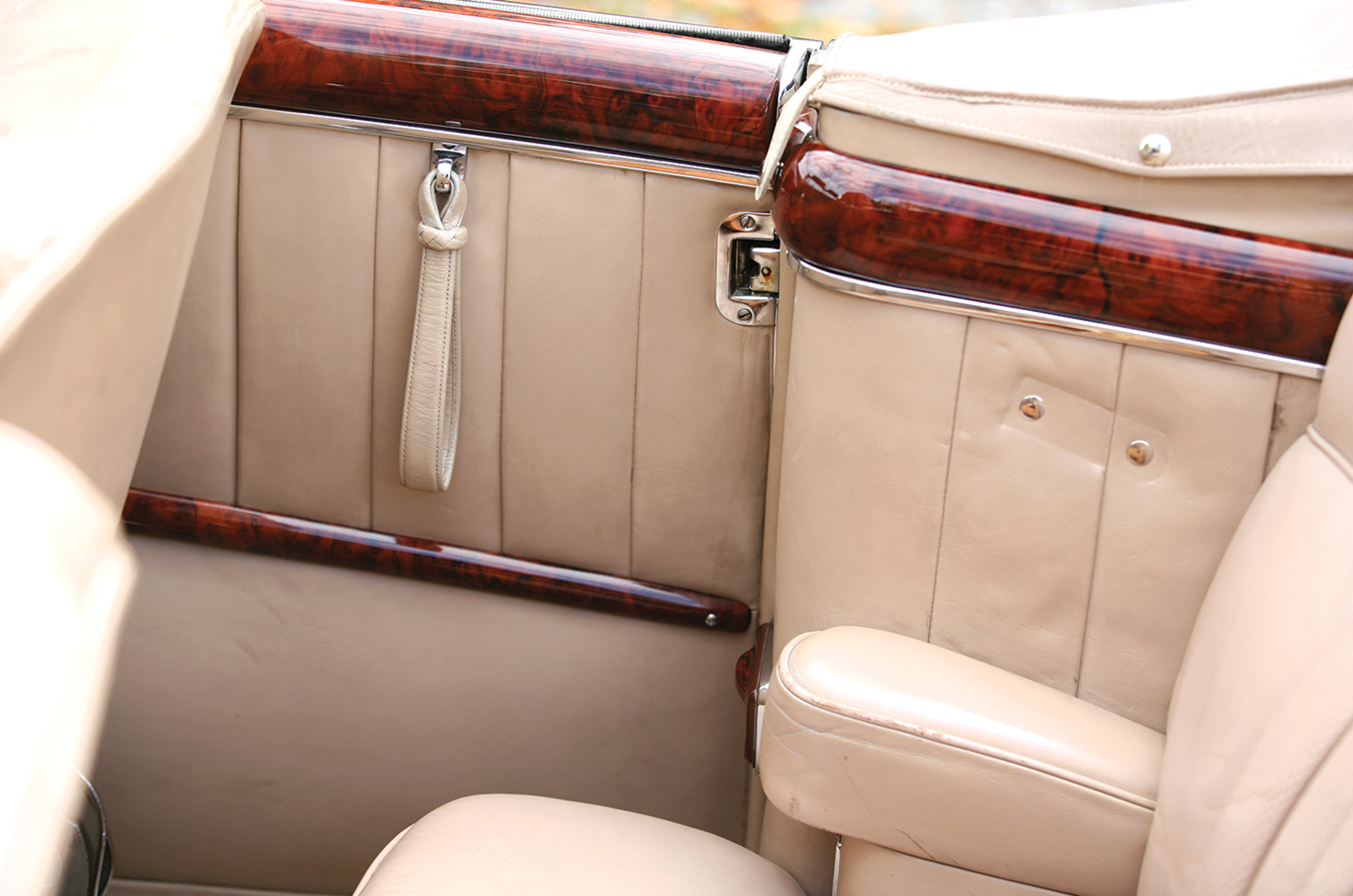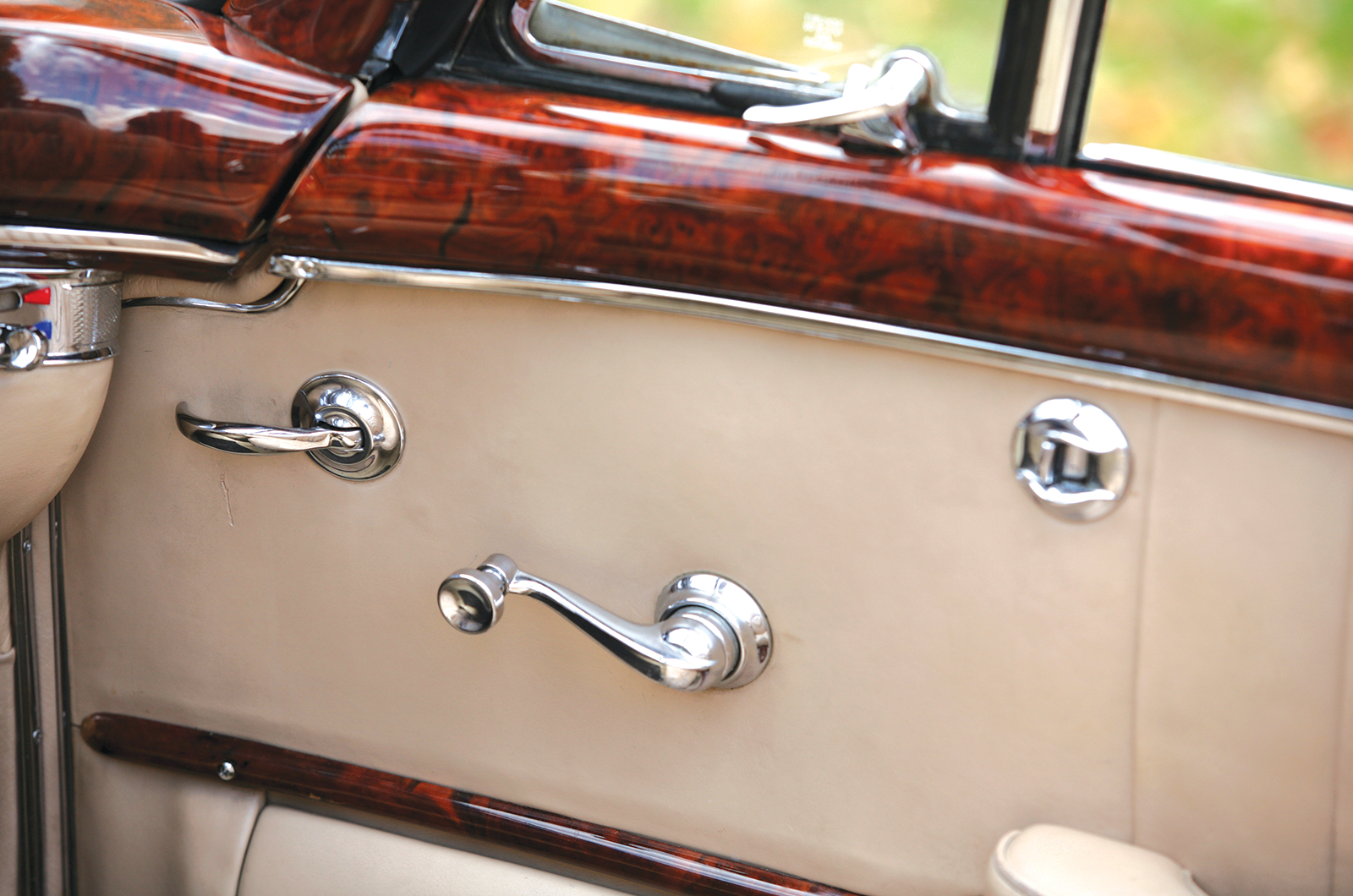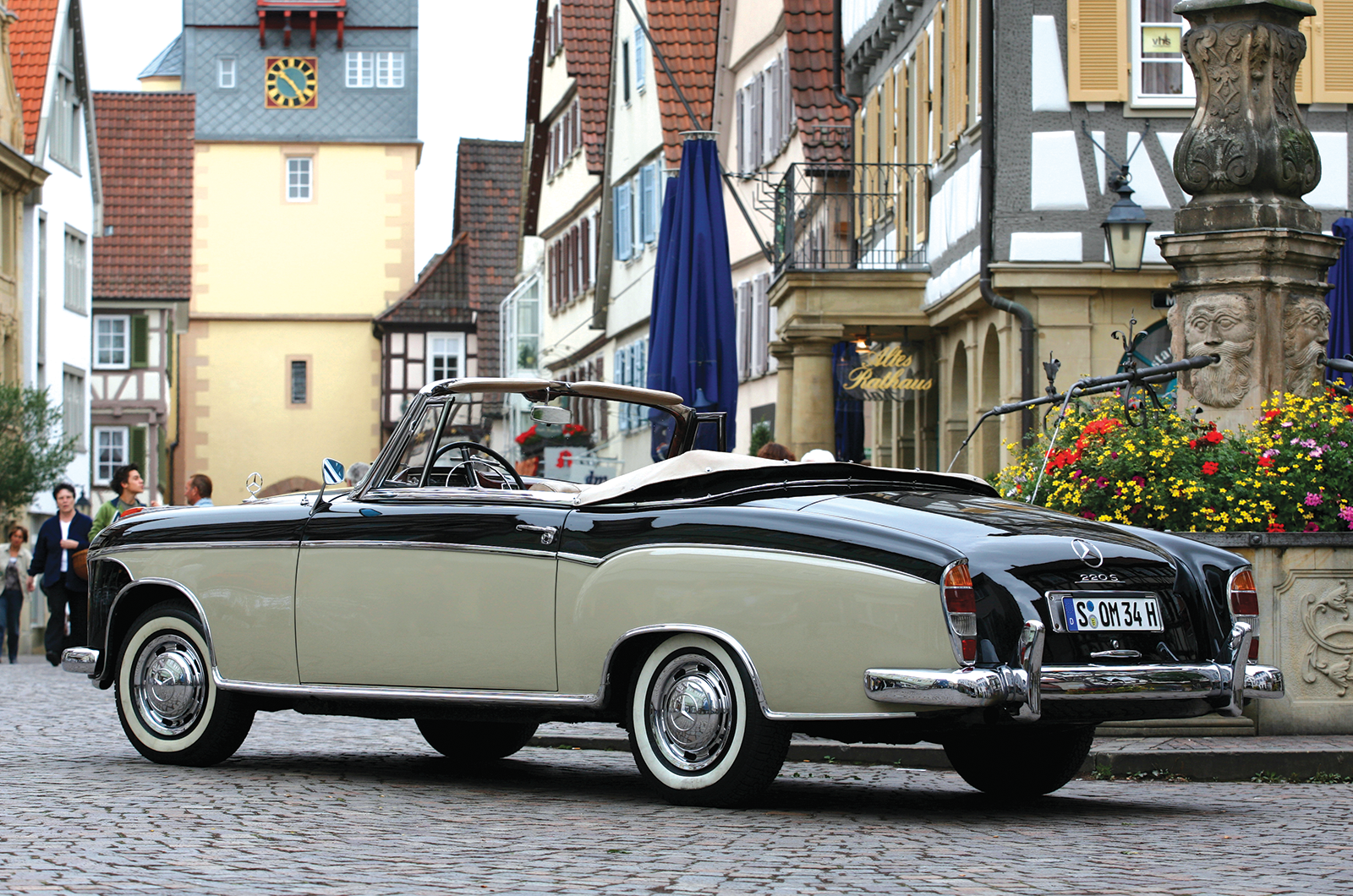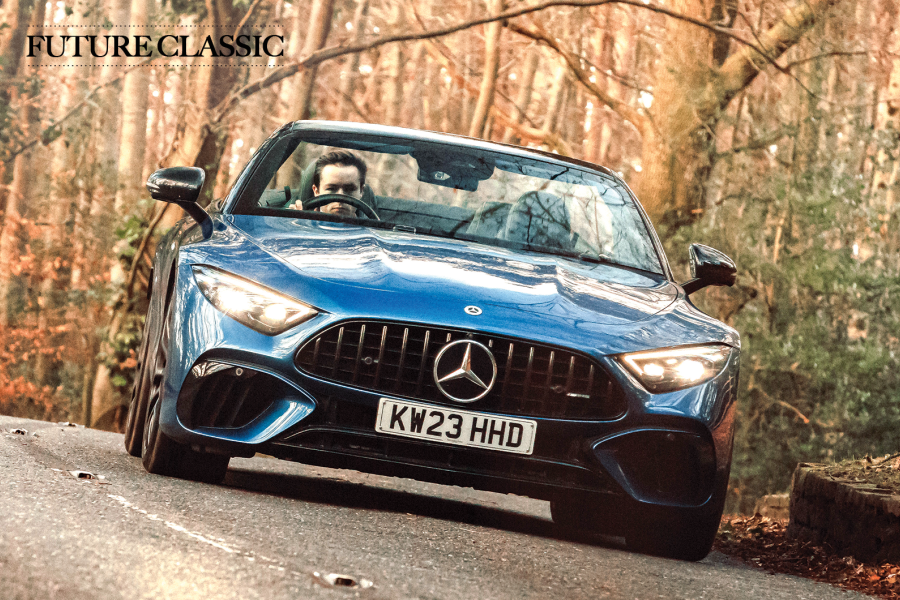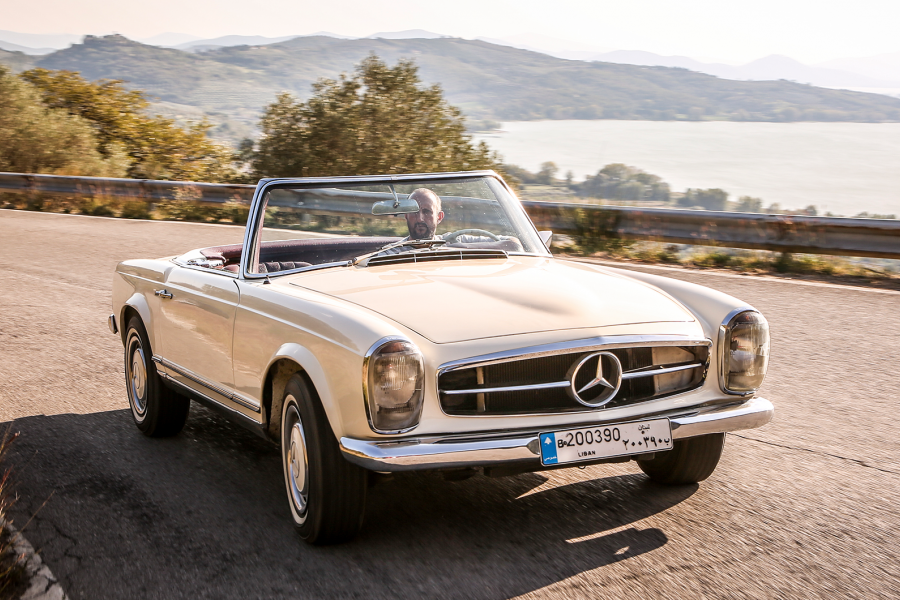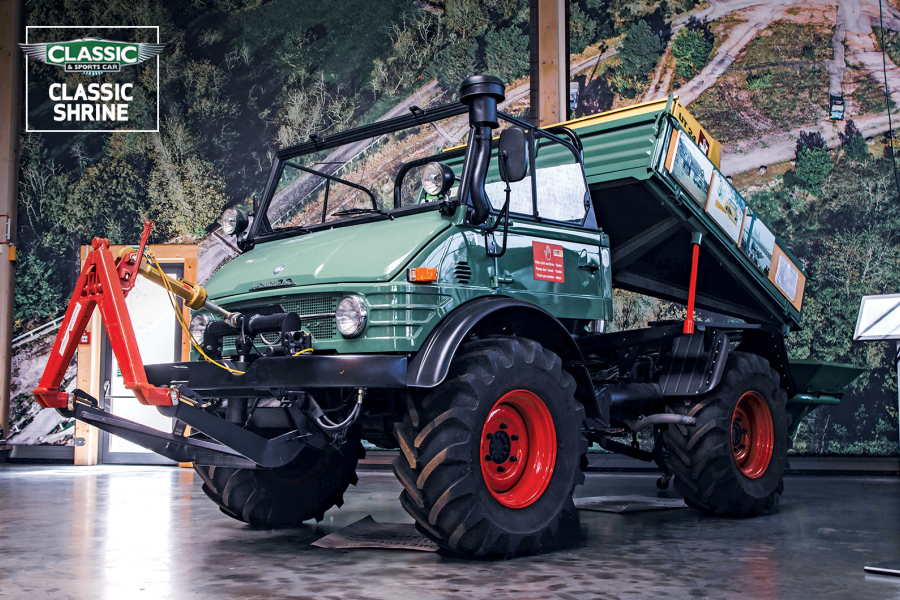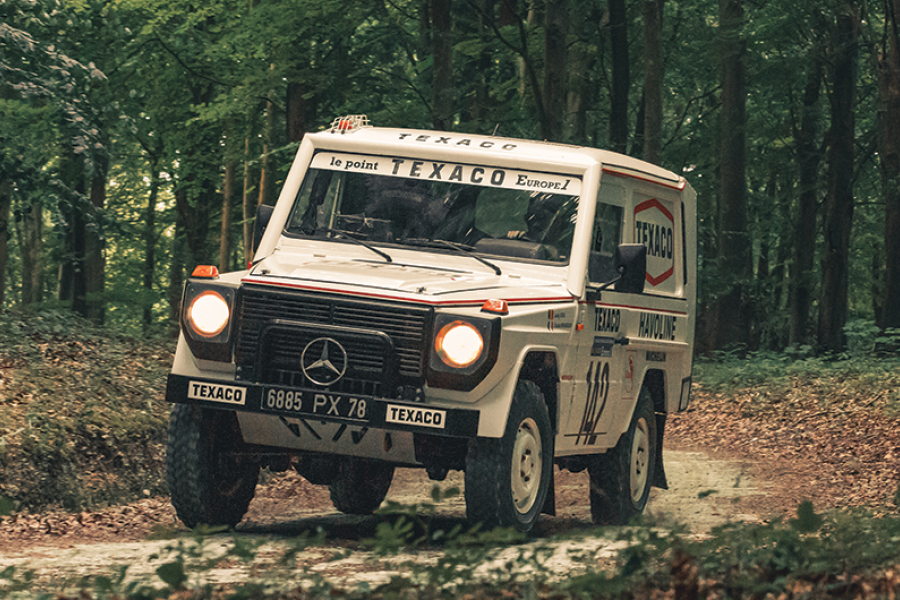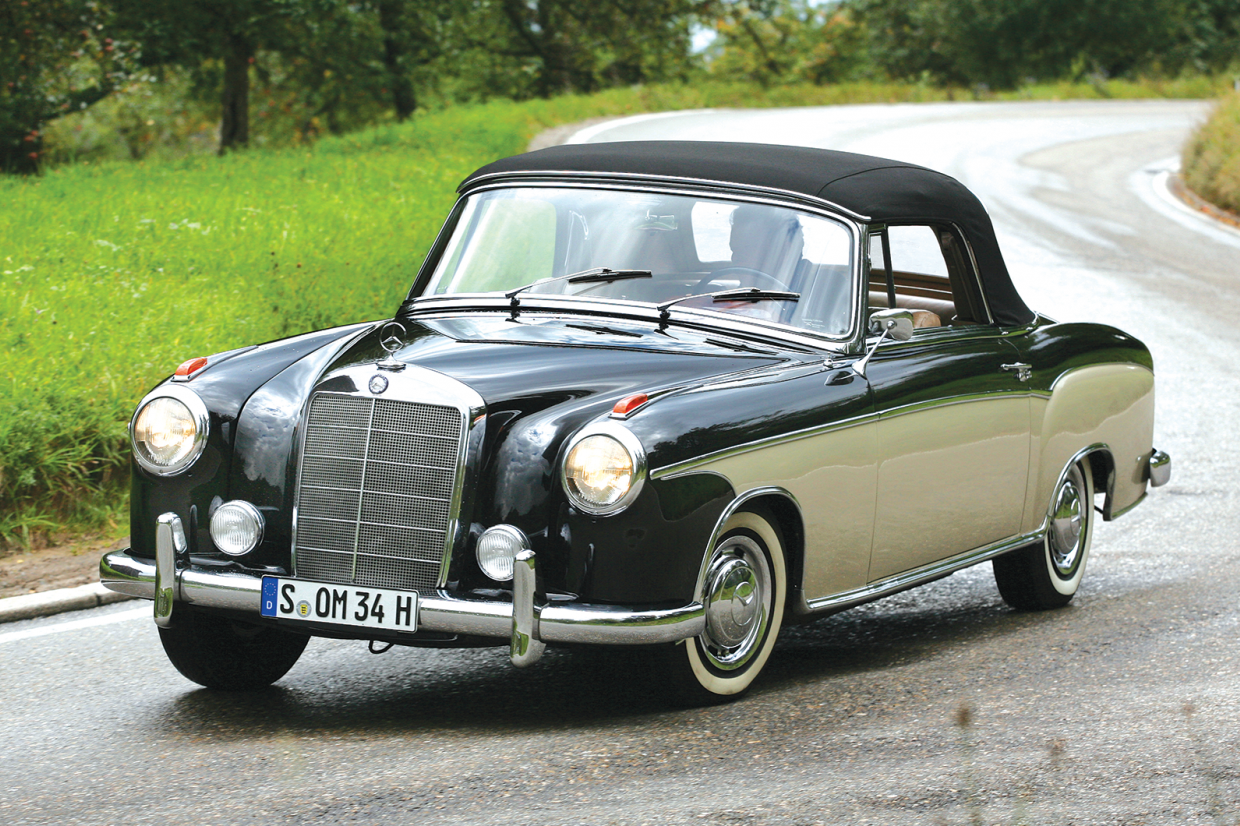
Mercedes-Benz has always had a feel for what makes truly a desirable, luxurious open touring car, and the 220S and SE of the Ponton era rate among its very best.
From a distance, you might find it difficult to see what makes them so coveted – I certainly did – yet once exposed to their elegant period charm and beautiful detailing, the light soon dawns and you swiftly realise that you are in the presence of something a bit special.
Built in fairly small numbers from 1956-ʼ60, these luxury models, based on the latest unitary saloons, signalled a return to form for Daimler-Benz AG of Untertürkheim every bit as potently as did the 300SL Gullwing.
And all of this little more than a decade after it was left in a state of complete destruction at the end of the war in 1945.
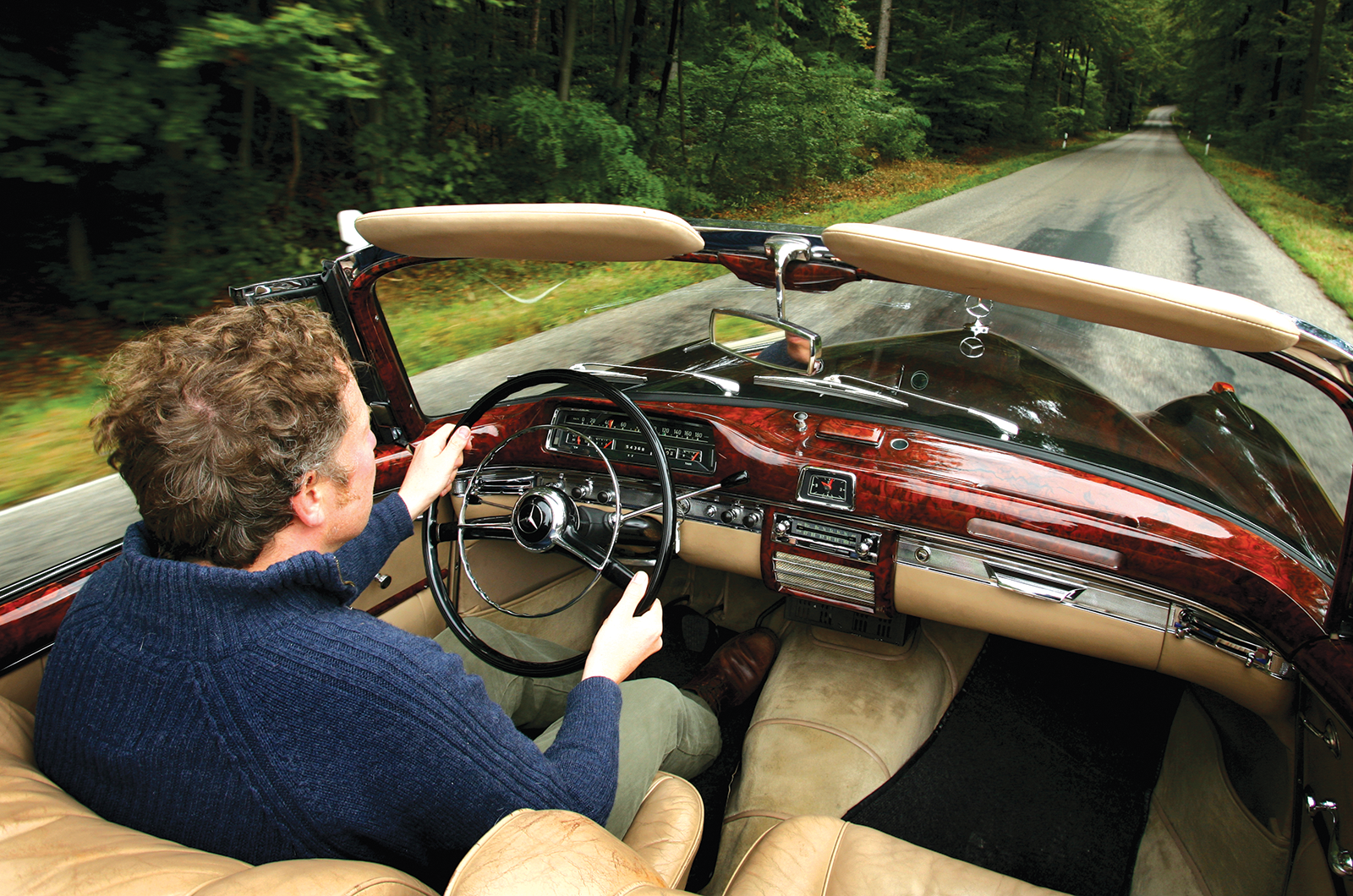
Despite its swing-axle rear, this Mercedes’ handling is benign
The mission for these two-door models was to offer buyers, particularly in America, a glitzier version of the staid 220 saloon.
In the USA, rich connoisseurs didnʼt mind paying big money for exclusive European cars, but at least liked to see – and let others see – where their money had gone.

